Together
Year | 2015
Location | Bruck an der Mur (Austria)
Type | Europan 13 Competition 2nd Prize
Use | Office Building + Public Space
Authors| Katerina Psegiannaki, Francisco García Triviño, José Manuel López Ujaque
Being Together is much more than a simple addition of single individualities. It is a way to cooperate within diversity, a way to create, grow and learn.
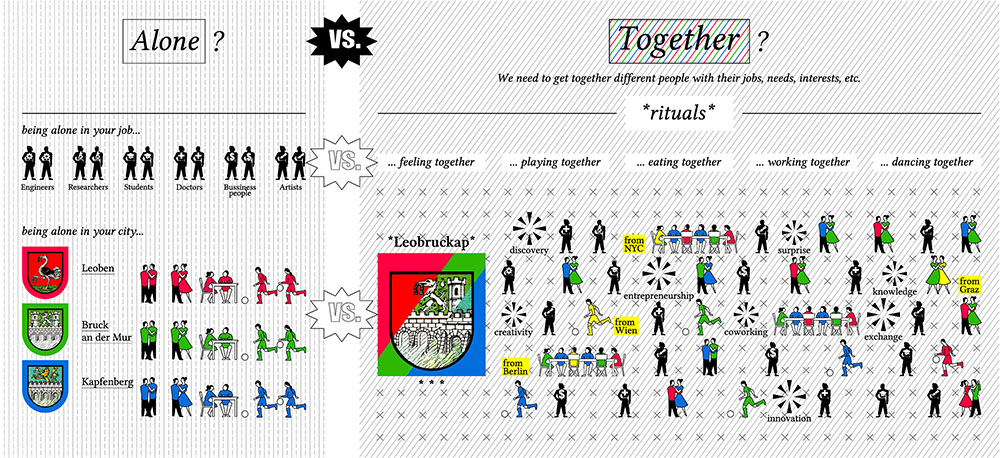
In his recent book Together (2012) Richard Sennett observes that “Changes in modern labour have in another way weakened both the desire and the capacity to cooperate with those who differ. In principle, every modern organization is in favour of cooperation; in practice, the structure of modern organizations inhibits it – a fact recognized in managerial discussions of the ‘silo effect’, the isolation of individuals and departments in different units, people and groups who share little and who indeed hoard information valuable to others. (… ) We are losing the skills of cooperation needed to make a complex society work.”
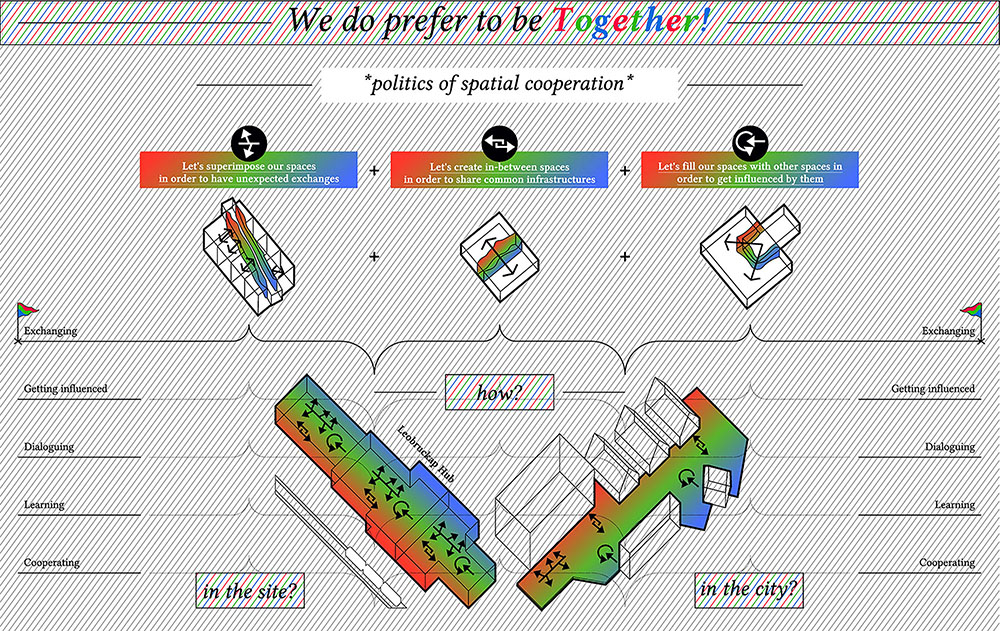
We agree that together we are smarter, more skilled and more recognizable; we have more power than isolated individuals fighting for survival so we precise new meeting rituals which can trigger the future spatial politics of the urban fabric and of buildings.
Everyday situations of cooperation identify the project which encourages working together as a necessary exercise in order to innovate, develop and undertake the needs of contemporary society. This cooperation provides creativity, transference and transversality of ideas. The result, an architectural system that assumes the complexities of this necessary but incomprehensibly weakened working mode of everyday cooperation in many aspects of our life.
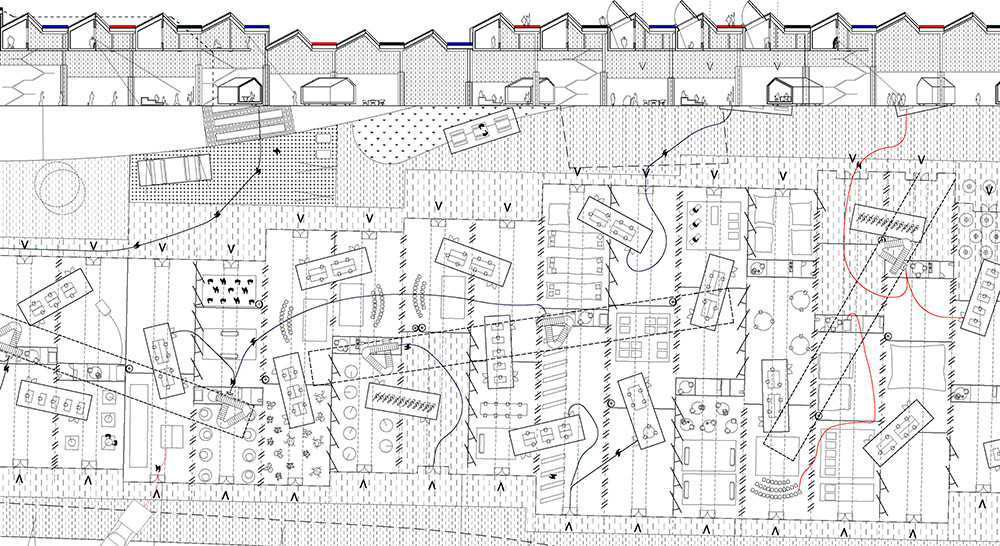
Three strategies of building relationships between different agents articulate the aim of the proposal: superimpose different kind of spaces in order to have unexpected exchanges, create in-between spaces in order to share common infrastructures, fill one kind of space with another one in order to provoke influence between users.
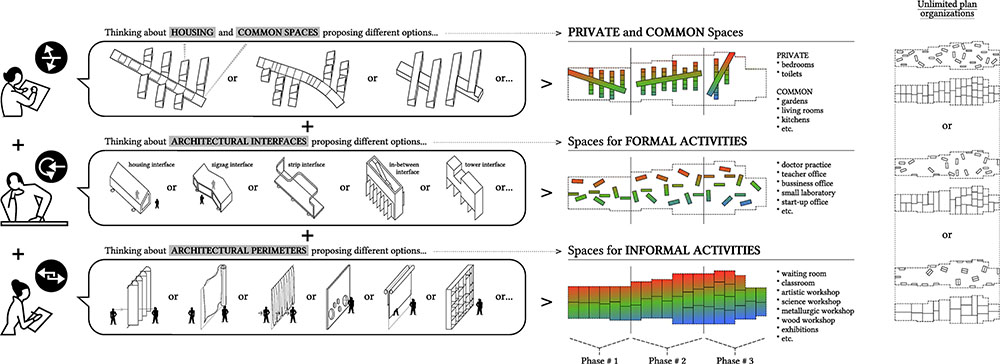
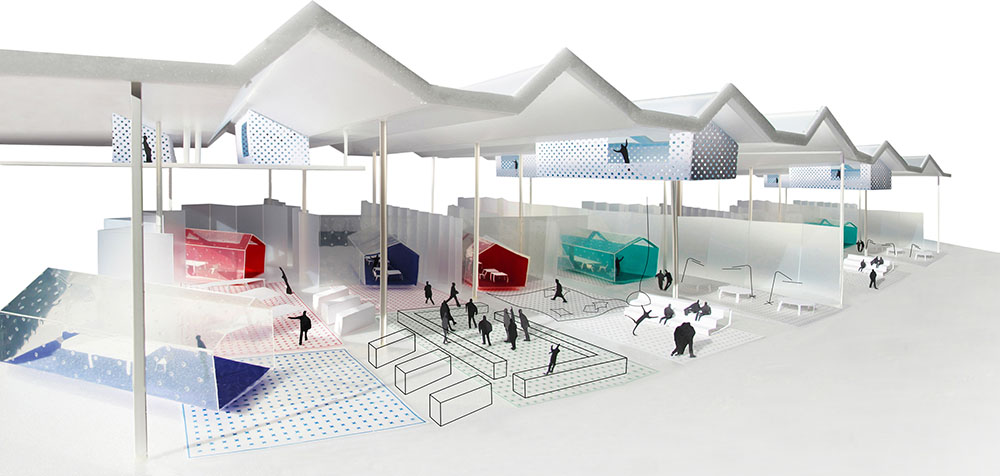
Each layer of the proposed building responds to these three everyday spatial politics whose interaction is decisive: 1) Designing the coexistence of the houses and the Hub will grow new special relationships between the inhabitants: What are the privacy limits of my house? What kind of contact with the working area is defined? With whom will I share my living room? With whom will I share my kitchen? Who else will have access to the same terrace as I? 2) Incorporating coexistence, influence and synergism in the workplace will enhance creativity, transversality and imagination: What activities are taking place around me? Who am I working with? What are the creative processes of my neighbour worker? What can I learn from him or her? What can I share? Can we cooperate? 3) Designing the crossing sites, boundaries, separations and unions will redistribute space under new rules; written under the “together” idea: Who is passing through my space? From whose space am I passing through? What activities can we share? What activities can we organize together?
City public connecting areas ‘Together’ is a proposal that is also related to its immediate urban environment from a broader regional perspective. Bruck an der Mur together with the nearby cities of Leoben and Kapfenberg have the necessary geographical and infrastructural conditions, to make the proposed joint project possible. New public space areas join the disconnected pieces of the city, which are isolated by huge roads and car parks that incomprehensibly are occupying the best locations.
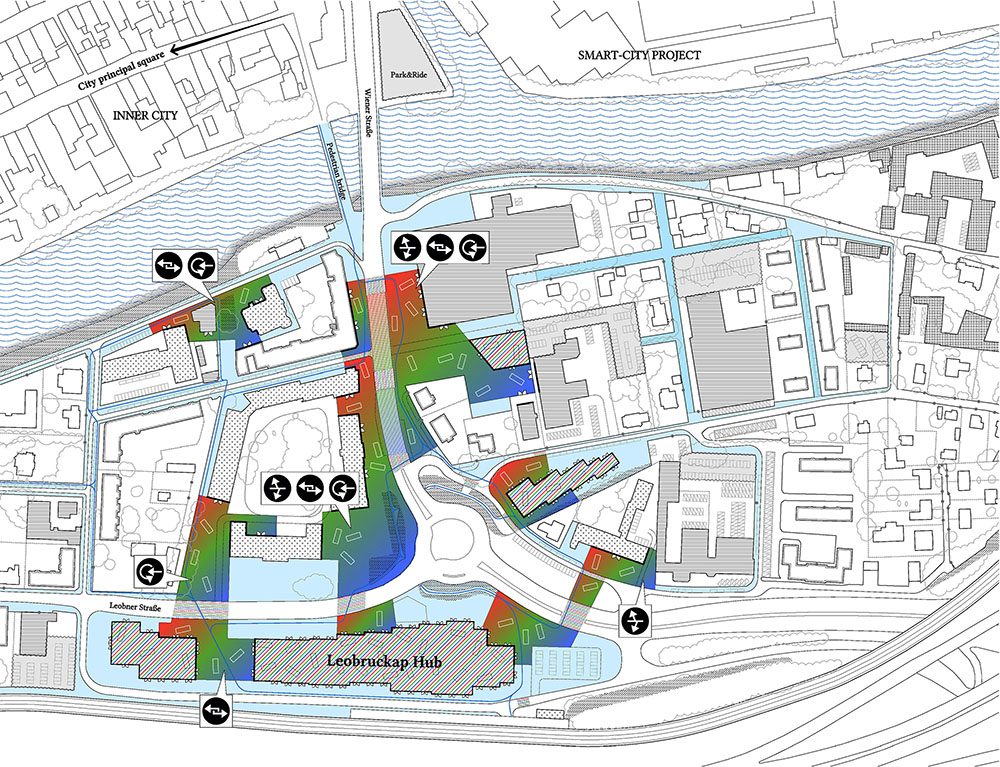
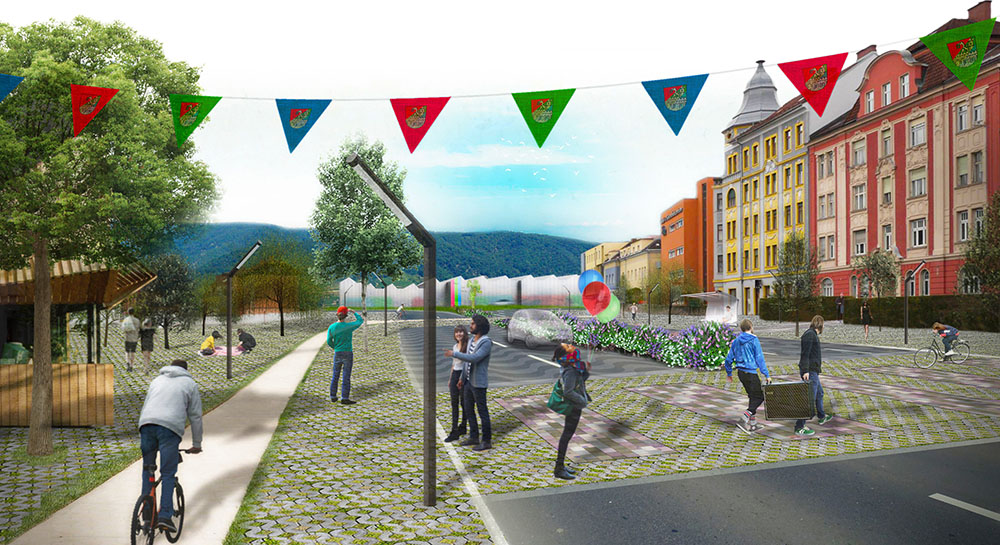
New buildings, existing ones and new small pieces of street furniture build a new collective public space that stands out in a territorial manner.
